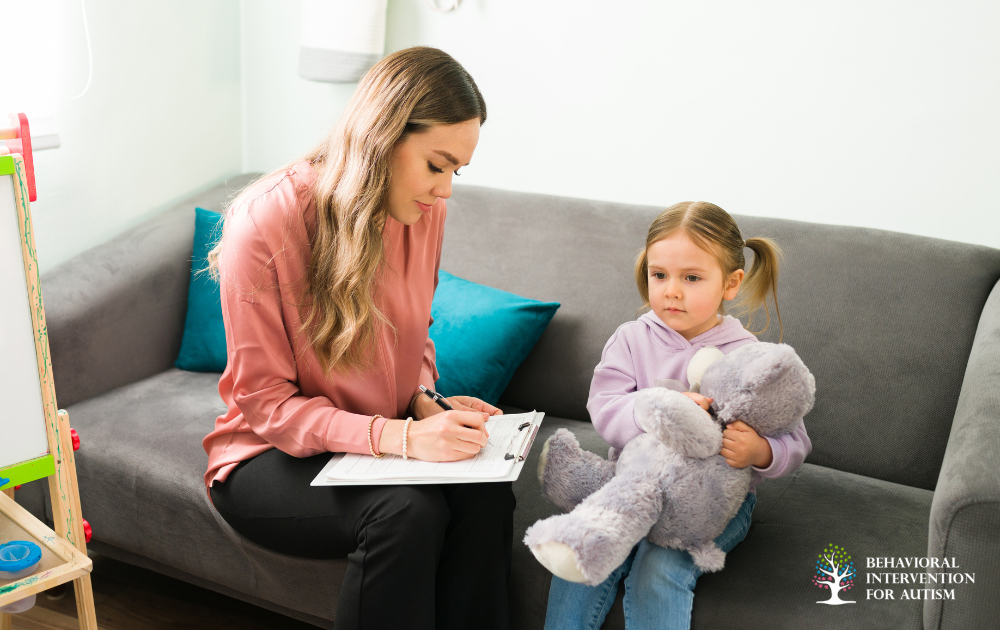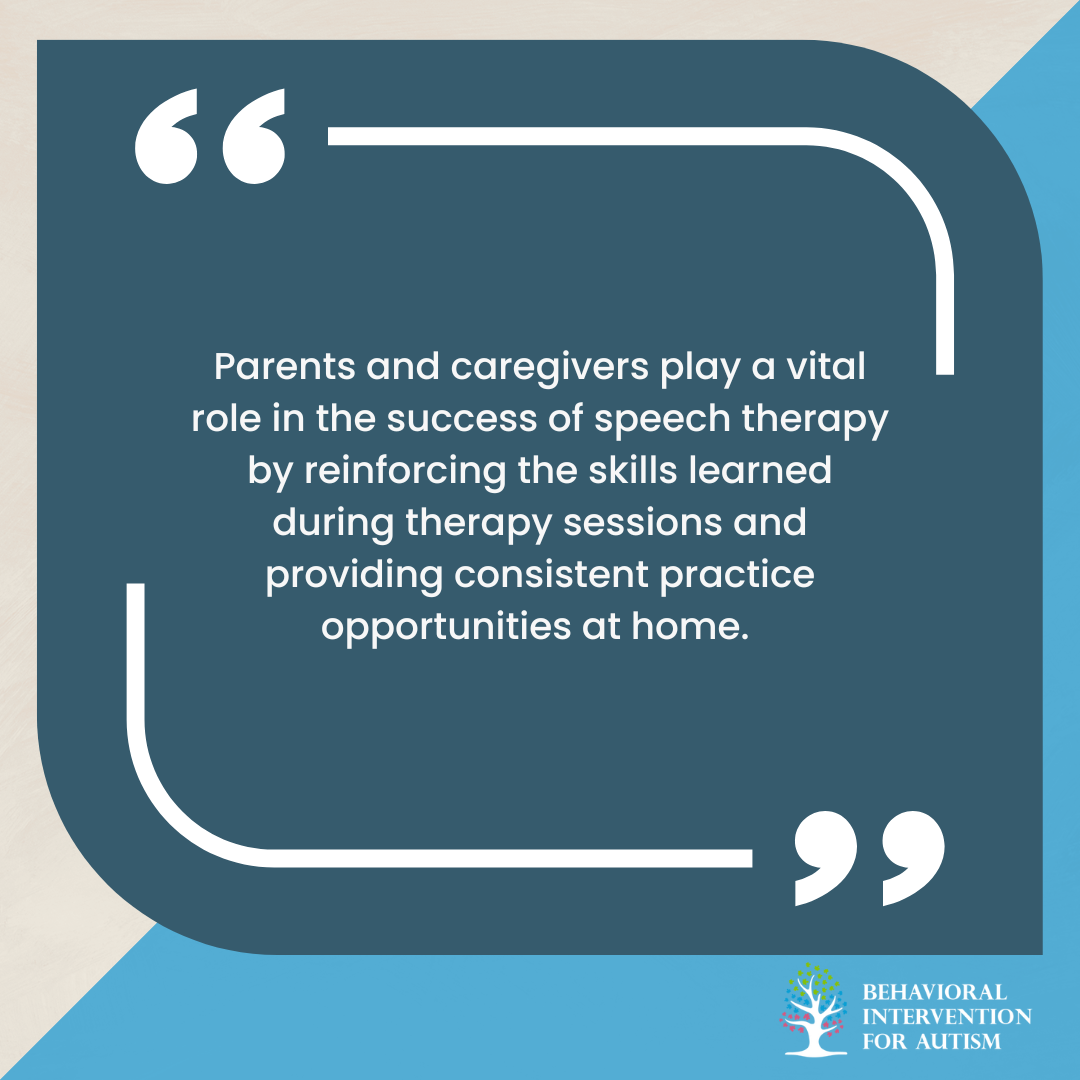
Table of Contents
One of the most significant challenges faced by individuals with autism is in the area of speech and language. That’s why speech therapy is a vital intervention for many individuals with this condition, helping them improve their communication skills and overall quality of life. This article explores the key benefits of speech therapy and outlines why it is such an essential component of their developmental support.
Autism and Speech Therapy
Speech therapy for individuals with autism is designed to address a variety of communication issues, from the development of speech and language skills to the improvement of social communication and pragmatic language use. Speech-language pathologists (SLPs) are trained to assess and treat speech, language, and communication disorders, tailoring their approach to meet the specific needs of each individual.
Autism and Speech Therapy: Key Benefits
Here are the main benefits you get with speech therapy for people with autism:
1. Improving Speech and Language Development
One of the primary benefits of speech therapy for individuals with autism is the improvement in speech and language development. Many children with autism experience delays in reaching speech milestones, such as babbling, first words, and sentence formation. Speech therapy helps these children develop their verbal communication skills by:
- Encouraging Babbling and First Words: SLPs use techniques to encourage early speech sounds and first words, which are critical building blocks for language development.
- Expanding Vocabulary: Therapy sessions focus on increasing the range of words a child can understand and use, aiding in more effective communication.
- Improving Sentence Structure: Children are taught how to combine words into sentences, enhancing their ability to express themselves clearly.
2. Enhancing Nonverbal Communication
Nonverbal communication, such as gestures, facial expressions, and eye contact, is another area where individuals with autism often struggle. Speech therapy can help improve these skills, which are essential for effective communication:
- Using Gestures and Signs: SLPs may teach children to use gestures or sign language as an alternative or supplement to spoken language.
- Facial Expressions: Therapy can include exercises to help children recognize and use facial expressions to convey emotions and intentions.
- Eye Contact: SLPs work on improving eye contact during communication, which can significantly enhance social interactions.
3. Developing Social Communication Skills
Social communication skills are crucial for interacting with others and forming relationships. Individuals with autism often find these skills challenging. Speech therapy can help develop these skills by:
- Teaching Conversational Skills: SLPs teach children how to start, maintain, and end conversations, as well as how to take turns and stay on topic.
- Understanding Social Cues: Therapy can include teaching children to recognize and respond to social cues, such as body language and tone of voice.
- Role-Playing: Practicing social scenarios through role-playing can help children learn how to navigate different social situations.
4. Addressing Echolalia and Pronoun Reversal
Echolalia (repeating words or phrases heard from others) and pronoun reversal (using “you” instead of “I”) are common in children with autism. Speech therapy addresses these issues by:
- Understanding Echolalia: SLPs help children understand the meaning and appropriate use of repeated phrases.
- Correcting Pronoun Use: Therapy includes exercises to teach the correct use of pronouns, helping children to refer to themselves and others accurately.
Enhancing Comprehension Skills
Understanding spoken language can be difficult for individuals with autism. Speech therapy works on improving comprehension skills by:
- Following Instructions: Children are taught to follow simple and complex instructions, which is crucial for daily functioning.
- Interpreting Figurative Language: Therapy includes exercises to help children understand idioms, jokes, and figurative language, which can often be confusing.
- Contextual Understanding: SLPs teach children to use context to understand the meaning of words and sentences better.
Supporting Alternative Communication Methods
For nonverbal individuals or those with severe speech delays, augmentative and alternative communication (AAC) methods can be crucial. Speech therapy supports the use of these methods by:
- Introducing AAC Devices: SLPs introduce and teach the use of AAC devices, such as speech-generating devices or picture exchange communication systems (PECS).
- Training in Sign Language: For some children, learning sign language can be an effective way to communicate.
- Customizing Communication Plans: SLPs develop individualized communication plans that incorporate the most suitable AAC methods for each child.
The Role of Parents and Caregivers
Collaborating with therapists through regular communication ensures that parents understand the therapy goals and techniques being used. Creating a supportive environment at home where communication is encouraged and everyday activities are utilized for language practice can significantly aid in the child’s progress. Additionally, being patient and encouraging, offering emotional support, celebrating small victories, and maintaining confidence is crucial for the motivation and development of children with autism undergoing speech therapy.
Early Intervention and Its Importance
Early intervention plays a critical role in maximizing the benefits of speech therapy for children with autism. Addressing speech and language issues early leads to better outcomes, including significant improvements in communication skills, social interactions, and overall quality of life.
One key reason for the importance of early intervention is brain plasticity; young children’s brains are highly adaptable, making it easier to develop new skills and behaviors. Moreover, early speech and language development establish a solid foundation for future academic and social success, laying the groundwork for effective communication throughout life. Early intervention also helps reduce frustration and behavioral challenges stemming from communication difficulties, enhancing the child’s emotional well-being.
In addition to early intervention, combining speech therapy with other therapeutic approaches enhances effectiveness. A multidisciplinary approach ensures comprehensive support for all aspects of a child’s development:
- Applied Behavior Analysis (ABA) techniques, for instance, reinforce desired behaviors and communication skills crucial for daily interactions.
- Occupational therapy focuses on sensory integration and fine motor skills, which are integral to communication development.
- Physical therapy addresses motor skills necessary for effective communication, such as oral motor skills needed for speech production.
By integrating these therapies, children with autism can receive holistic support tailored to their unique needs, fostering optimal development and communication abilities.
Conclusion
Speech therapy is a crucial intervention for individuals with autism, offering a wide range of benefits that significantly enhance their communication skills and overall quality of life. By addressing speech and language development, nonverbal communication, social skills, and comprehension, speech therapy provides the tools necessary for individuals with autism to communicate more effectively.
Early intervention, combined with the active involvement of parents and caregivers and a multidisciplinary approach, can lead to profound improvements and help children with autism reach their full potential.
Learn more about our ABA programs in Florida at Behavioral Intervention for Autism. Reach out today to know more about autism and speech therapy or book a session for further assessment.
Sources:
https://nurselinecs.co.uk/blog/how-speech-therapy-benefits-autistic-people/
https://www.autismparentingmagazine.com/autism-speech-therapy-benefits/
https://www.verywellhealth.com/speech-therapy-for-autism-the-basics-260577
- 9 Common Obsessions of Children With Autism You Should Know - February 25, 2025
- What is Neurodiversity? A Guide to Embracing Differences - February 25, 2025
- Understanding Hyperfocus in Autism: What It Means and Why It Happens - February 25, 2025








